Line Escartelle
A line escartelle for dividing a field. "Escutcheons that have more than one tincture are divided by…
Line Nowy
A line nowy or franché for dividing a field. "Escutcheons that have more than one tincture are…
Line Dove-Tailed
A line dove-tailed for dividing a field. "Escutcheons that have more than one tincture are divided by…
Line Embattled Grady
A line embattled grady or battled embattled for dividing a field. "Escutcheons that have more than one…
Line Potent
A line potent for dividing a field. "Escutcheons that have more than one tincture are divided by lines…
Line Double Arched
A line double arched for dividing a field. "Escutcheons that have more than one tincture are divided…
Line Arched
A line arched or enarched for dividing a field. "Escutcheons that have more than one tincture are divided…
Line Urdée
A line urdée for dividing a field. "Escutcheons that have more than one tincture are divided…

Line Radient
A line radient for dividing a field. "Escutcheons that have more than one tincture are divided by lines…
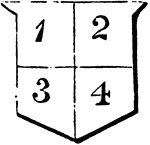
Quartered Per Cross
"QUARTERED PER CROSS—The shield is divided into four parts, called quarters, by an horizontal…
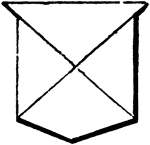
Quartered Per Saltier
"QUARTERED PER SALTIER, which is made by two diagonal lines, dexter and sinister, crossing each other…
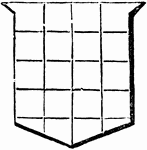
Quarterings
"The Escutcheon is sometimes divided into a great number of parts, in order to place in it the arms…
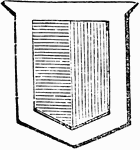
Shield Showing Difference
Differences are shields with a distinguishing charge or bordure. "Party per pale, azure and gules; a…
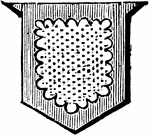
Shield Showing Difference
Differences are shields with a distinguishing charge or bordure. "The annexed example is or, a bordure…

Label Difference
"The Heir, or first son, the LABEL. The differences used by armorists at the present time are nine in…
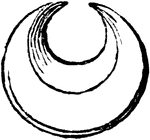
Crescent Difference
"Second Son, the CRESCENT. The differences used by armorists at the present time are nine in number.…
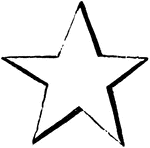
Mullet Difference
"Third Son, the MULLET. The differences used by armorists at the present time are nine in number. They…
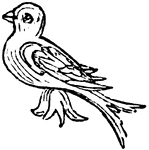
Martlet Difference
"Fourth Son, the MARTLET. The differences used by armorists at the present time are nine in number.…
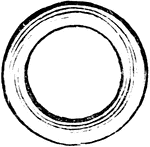
Annulet Difference
"Fifth Son, the ANNULET. The differences used by armorists at the present time are nine in number. They…
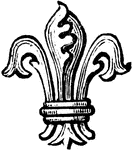
Fleur-De-Lis Difference
"Sixth Son, the FLEUR-DE-LIS. The differences used by armorists at the present time are nine in number.…
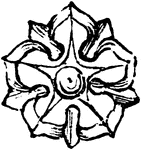
Rose Difference
"Seventh Son, the ROSE. The differences used by armorists at the present time are nine in number. They…
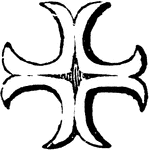
Cross Moline
"Eighth Son, the CROSS MOLINE. The differences used by armorists at the present time are nine in number.…
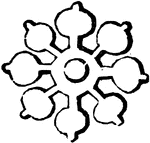
Double Quatrefoil
"Ninth Son, the DOUBLE QUATREFOIL. The differences used by armorists at the present time are nine in…
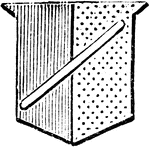
Shield Showing Baton
"The only abatement used in heraldry is the baton: this denotes illegitimacy. It is borne in the escutcheons…
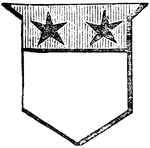
Chief Ordinary
"Argent, on a chief, gules, two mullets, sable. The chief is an ordinary terminated by an horizontal…
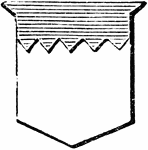
Chief Indented
"Argent, a chief, azure, indented. The chief is an ordinary terminated by an horizontal line, which,…
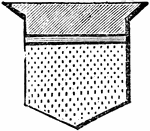
Fillet and Chief
"Or, a chief, purpure, in the lower part a fillet, azure. The chief has a diminutive called a fillet;…
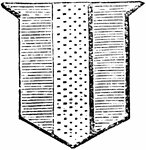
Pale Ordinary
"Azure, a pale, or. The pale is an honourable ordinary, consisting of two perpendicular lines drawn…
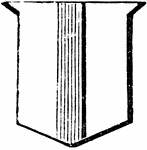
Pallet Ordinary
"Argent, a pallet, gules. The pale has a diminutive called the pallet, which is one half the width of…
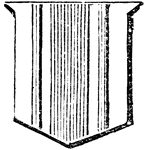
Endorses and Pale
"Argent, a pale between two endorses, gules. The pale has another diminutive one fourth its size; it…
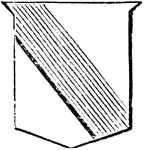
Ordinary Bend
"Argent, a bend, vert. The bend is an honourable ordinary, formed by two diagonal lines drawn from the…
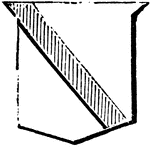
Shield Showing Garter
21 Then the angel of the LORD put forth the end of the staff that was in his hand, and touched the flesh…
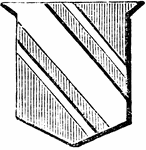
Shield Showing Cotice
Argent, a riband vert. The riband, which is one third less than the garter and the bendlet, must never…
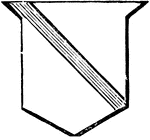
Shield Showing Riband
Gules, two bendlets, engrailed, argent. The riband, which is one third less than the garter and the…
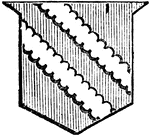
Shield Showing Bendlets
Argent, a bend sinister, purpure. The bend sinister is the same breadth as the bend dexter, and is drawn…

Bend Sinister
Argent, a scarpe, purpure. The scarpe is the diminutive of the bend sinister, and is half its size.…
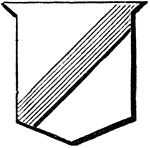
Shield Showing Scarpe
Gules, a baton, sable, garnished, or. The baton is the fourth part of the bend, and, as before mentioned,…
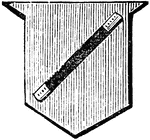
Shield Showing Baton
Argent, a fess, azure. The fess is formed by two horizontal lines drawn above and below the centre of…
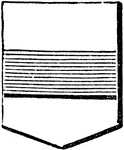
Shield Showing Fess
Gules, two bars, argent. The bar is formed in the same manner as the fess, but it only occupies the…
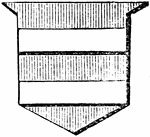
Shield Showing Bar
Argent, two closets, azure. The closet is a diminutive of the bar, and is half its width. -Hall, 1862
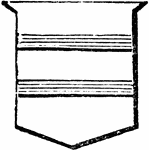
Shield Showing Closet
Gules, two barrulets, argent. The barrulet is half the width of the closet. -Hall, 1862
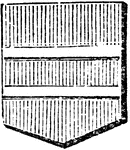
Shield Showing Barrulet
Azure, two bars, gemels, argent. The annexed example is to illustrate the word gemels, which is frequently…
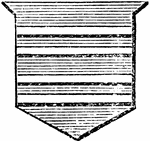
Shield Showing Gemels
Barry of seven pieces, argent and azure. When the shield contains a number of bars of metal and colour…
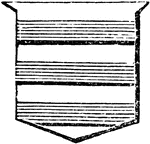
Barry of Seven Pieces
34 And Jephthah came to Mizpeh unto his house, and, behold, his daughter came out to meet him with timbrels…
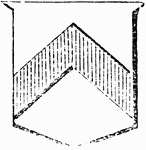
Shield Showing Chevron
Argent, two chevronels, gules. The diminutives of the chevron, according to English Heraldry, are the…
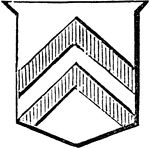
Shield Showing Chevronels
Gules, three couple-closes interlaced in base, or ... the couple-close ... is half the chevronel. -Hall,…
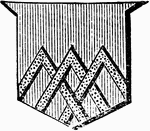
Couple-Close
Or, a cross, gules. THE CROSS ... as its name imports, was the distinguishing badge of the Crusaders,…
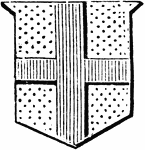
Cross Ordinary
Gules, a saltier, argent. The saltier was formed by making two pieces of riband cross diagonally, having…
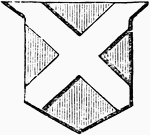
Saltier Ordinary
5 Then went Samson down, and his father and his mother, to Timnath, and came to the vineyards of Timnath:…
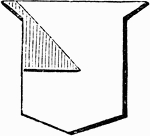
Gyron Ordinary
"The gyron is a triangular figure formed by drawing a line from the dexter angle of the chief of the…
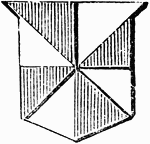
Gyrony Ordinary
"Gyrony of eight pieces, argent and gules. The field is said to be gyrony when it is covered with gyrons."…
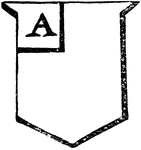
Canton Ordinary
"The canton is a square part of the escutcheon, usually occupying about one-eighth of the field; it…
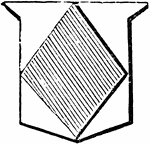
Lozenge Ordinary
"Argent, a lozenge, vert. The lozenge is formed by four equal and parallel lines but not rectangular,…
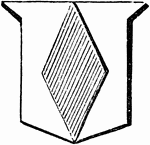
Fusil Ordinary
"Argent, a fusil, purpure. The fusil is narrower than the lozenge, the angles at the chief and base…
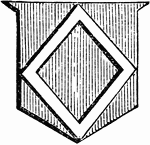
Mascle Ordinary
"Gules, a mascle, argent. The mascle is in the shape of a lozenge but perforated through its whole extent…
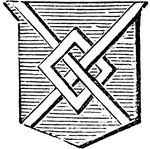
Fret Ordinary
"Azure, a fret, argent. The fret is formed by two lines interlaced in saltier with a mascle." -Hall,…
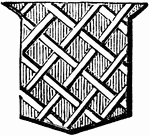
Fretty Ordinary
"Gules, fretty of ten pieces, argent. Fretty is when the shield is covered with lines crossing each…
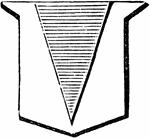
Pile Ordinary
"Argent, a pile, azure. The pile is formed like a wedge, and may be borne wavy, engrailed, &c.; it issues…
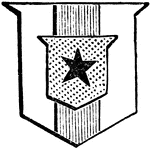
Inescutcheon Ordinary
"Argent, a pale, gules, over all an inescutcheon or, a mullet sable. The inescutcheon is a small escutcheon…
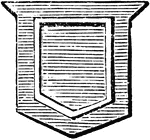
Orle Ordinary
"Azure, an orle, argent. An orle is a perforated inescutcheon, and usually takes the shape of the shield…